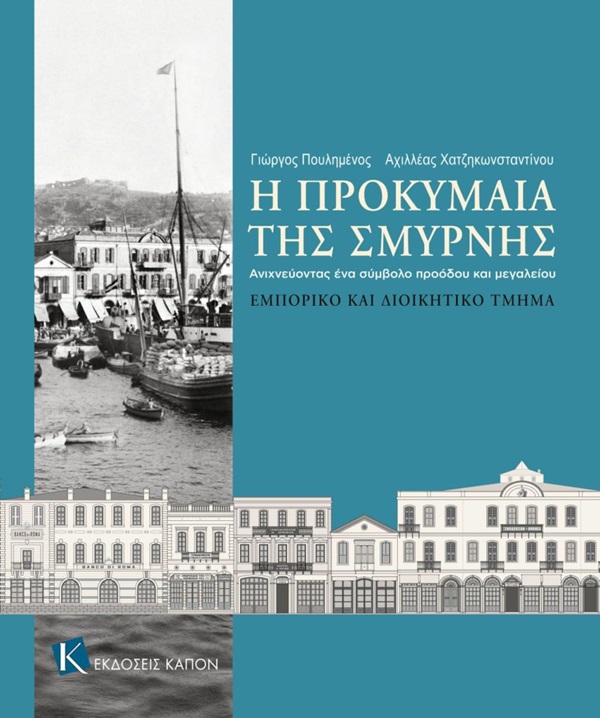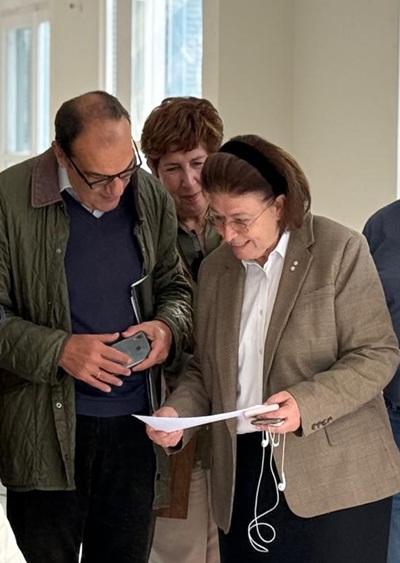
Title:The Smyrna Quay: Tracing a symbol of progress and splendour
Author: George Poulimenos, Αchilleas Chatzikonstantinou
Publishing House: KAPON Editions
Subject: Historical Study
Year: 2019
Pages: 396 (VOL.I), 356 (VOL.II)
Technical features: 24,5×29,6
ESTIA Nea Smyrni and KAPON Publications will return on Wednesday, September 25, 2024 at 19.00, with the presentation of the award-winning two-volume work “The Smyrna Quay: Tracing a Symbol of Progress and Splendour”.
The two authors-researchers, George Poulimenos (computer programmer) and Achilleas Chatzikonstantinou (geologist/geographer) will speak about their work.
“The Smyrna Quay”, a two-volume book, aims to introduce in an original but comprehensive manner the buildings of this legendary 3 km-long strip of land on the waterfront of the Ottoman port city of Smyrna (modern-day Izmir), widely known as the “Kai”, as a continuous architectural, topographic and historical ensemble.
The Quay became an iconic symbol of Smyrna, a synonym of the progress, cosmopolitanism and the affluence of its inhabitants, throughout the 47 years period which spanned its existence, from its completion in August 1875 to September 1922. It was then that this glorious sight came violently to an end in the aftermath of the Greco-Turkish war (1919-1922), after the recapture of Smyrna by the Kemalist forces and the Great Fire that followed. The majority of the Quay buildings perished and those parts that had managed to escape the fire, inevitably fell prey to the reconstruction of the city, by that time officially named İzmir, to such extent that nowadays very few are still intact.
The present edition is an outcome of lengthy research by the two co-authors, who utilized every possible reference source in Greece and abroad, including books, the press, commercial and travel guides, maps and images.
Hundreds of Quay postcards and panoramas have been studied, depicting grand mansions, theatres, cafйs, consulates, clubs and hotels, as well as the bustling port, administration buildings and agencies. All these were aspects of the public and private life in an Anatolian city-junction, where the European west wind blew strongly for centuries.
Particular attention is paid to the lives of the inhabitants of the Quay that formed a dynamic, multiethnic society.
Taking all of the aforementioned into consideration, each one of more than 200 structures was recorded and sketched separately, in order to digitally restore the entire string of faзades of the Smyrna Quay at their former glory. Moreover, the illustrations and drawings of the book complement the text and evidence gathered, thus shedding light to lesser known and unknown aspects of the buildings’ history.
Almost a century later, However, although Smyrna seems to have changed forever, the city always has a special place in the collective memory through the study of its history. Hence, let us take an imaginary stroll along this famous promenade, just as the old Smyrniots cherished to do so, and try to relive the “golden era” of Smyrna through the pages of this extensive guide.
The study received the Lycurgan Prize of the Academy of Athens in 2019.







Leave A Comment